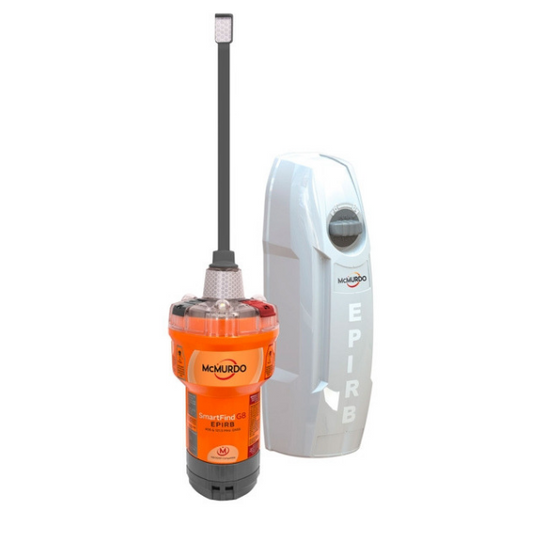Your cart is empty

Locator Beacons & Flares
Ensuring safety at sea is paramount for all mariners. Personal Locator Beacons (PLBs) and electronic flares are vital tools that enhance emergency preparedness by facilitating swift rescue operations.
Frequently Asked Question
When putting out to sea, safety should always be a top priority. That's where personal locator beacons (PLBs) and flares come into play, serving as indispensable tools for committed commercial or pleasure boaters, mariners, and fishermen. PLBs, such as those offered by trusted brands like Ocean Signal, McMurdo, and ACR, provide a lifeline in emergency situations by transmitting distress signals to search and rescue authorities via satellite communication networks. Meanwhile, flares offer a visual distress signal, ensuring your location is readily identifiable, especially in low visibility conditions. With features like compact design, waterproof construction, and long-lasting battery life, these essential safety devices provide the ultimate in peace of mind. Don't set sail without the protection of PLBs and flares — explore our collection at OSAT and embark on your maritime journeys with confidence.
Frequently Asked Questions
What’s the difference between a locator beacon and a satellite tracker?
Locator beacons like PLBs (Personal Locator Beacons) or EPIRBs are designed for emergencies only, they send a distress signal directly to global rescue coordination centers. Satellite trackers offer broader functionality, including messaging and tracking. Both are valuable, but serve distinct roles.
Do locator beacons work globally?
Yes. Beacons that use the Cospas-Sarsat system, like most PLBs, are monitored 24/7 around the world. Whether you're at sea, in the mountains, or in the Arctic, your SOS signal will be received and routed to local search and rescue services.
Is there a subscription required for locator beacons?
No. Unlike trackers or sat phones, most beacons don’t require a subscription. After purchase, they only need to be registered with NOAA (or your local authority), and they’re ready for use in an emergency.
How long does the battery last?
Most locator beacons have a shelf life of 5–7 years, and once activated, they transmit for a minimum of 24 hours. After use, or when the expiry date nears, the unit must be professionally serviced or replaced.
Do I need to register my beacon?
Yes, registration is required and critical. It ensures that rescue services have your emergency contacts, trip details, and device info, which significantly speeds up response in an actual emergency.

